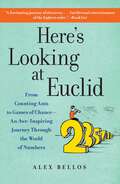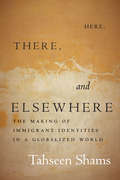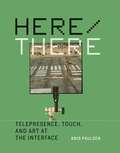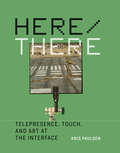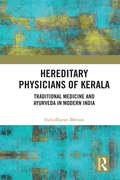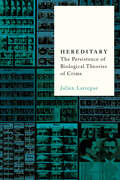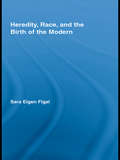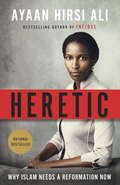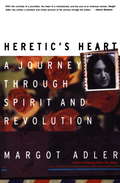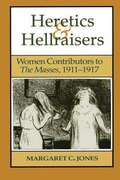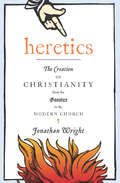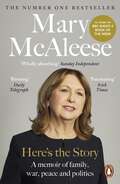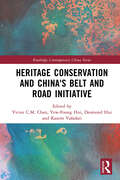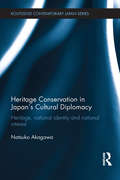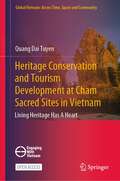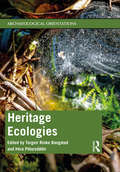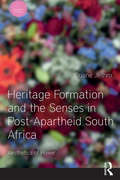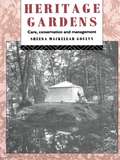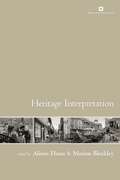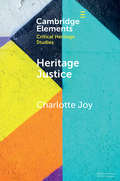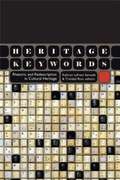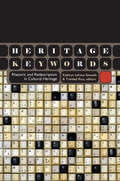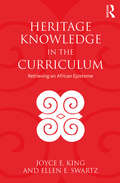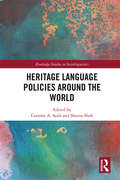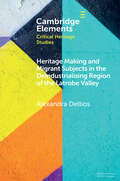- Table View
- List View
Here's Looking at Euclid: A Surprising Excursion Through the Astonishing World of Math
by Alex BellosToo often math gets a bad rap, characterized as dry and difficult. But, Alex Bellos says, "math can be inspiring and brilliantly creative. Mathematical thought is one of the great achievements of the human race, and arguably the foundation of all human progress. The world of mathematics is a remarkable place."Bellos has traveled all around the globe and has plunged into history to uncover fascinating stories of mathematical achievement, from the breakthroughs of Euclid, the greatest mathematician of all time, to the creations of the Zen master of origami, one of the hottest areas of mathematical work today. Taking us into the wilds of the Amazon, he tells the story of a tribe there who can count only to five and reports on the latest findings about the math instinct—including the revelation that ants can actually count how many steps they’ve taken. Journeying to the Bay of Bengal, he interviews a Hindu sage about the brilliant mathematical insights of the Buddha, while in Japan he visits the godfather of Sudoku and introduces the brainteasing delights of mathematical games.Exploring the mysteries of randomness, he explains why it is impossible for our iPods to truly randomly select songs. In probing the many intrigues of that most beloved of numbers, pi, he visits with two brothers so obsessed with the elusive number that they built a supercomputer in their Manhattan apartment to study it. Throughout, the journey is enhanced with a wealth of intriguing illustrations, such as of the clever puzzles known as tangrams and the crochet creation of an American math professor who suddenly realized one day that she could knit a representation of higher dimensional space that no one had been able to visualize. Whether writing about how algebra solved Swedish traffic problems, visiting the Mental Calculation World Cup to disclose the secrets of lightning calculation, or exploring the links between pineapples and beautiful teeth, Bellos is a wonderfully engaging guide who never fails to delight even as he edifies. Here’s Looking at Euclid is a rare gem that brings the beauty of math to life.
Here, There, and Elsewhere: The Making of Immigrant Identities in a Globalized World (Globalization in Everyday Life)
by Tahseen ShamsChallenging the commonly held perception that immigrants' lives are shaped exclusively by their sending and receiving countries, Here, There, and Elsewhere breaks new ground by showing how immigrants are vectors of globalization who both produce and experience the interconnectedness of societies—not only the societies of origin and destination, but also, the societies in places beyond. Tahseen Shams posits a new concept for thinking about these places that are neither the immigrants' homeland nor hostland—the "elsewhere." Drawing on rich ethnographic data, interviews, and analysis of the social media activities of South Asian Muslim Americans, Shams uncovers how different dimensions of the immigrants' ethnic and religious identities connect them to different elsewheres in places as far-ranging as the Middle East, Europe, and Africa. Yet not all places in the world are elsewheres. How a faraway foreign land becomes salient to the immigrant's sense of self depends on an interplay of global hierarchies, homeland politics, and hostland dynamics. Referencing today's 24-hour news cycle and the ways that social media connects diverse places and peoples at the touch of a screen, Shams traces how the homeland, hostland, and elsewhere combine to affect the ways in which immigrants and their descendants understand themselves and are understood by others.
Here/There: Telepresence, Touch, and Art at the Interface
by Kris Paulsen"Telepresence" allows us to feel present -- through vision, hearing, and even touch -- at a remote location by means of real-time communication technology. Networked devices such as video cameras and telerobots extend our corporeal agency into distant spaces. In Here/There, Kris Paulsen examines telepresence technologies through the lens of contemporary artistic experiments, from early video art through current "drone vision" works. Paulsen traces an arc of increasing interactivity, as video screens became spaces for communication and physical, tactile intervention. She explores the work of artists who took up these technological tools and questioned the aesthetic, social, and ethical stakes of media that allow us to manipulate and affect far-off environments and other people -- to touch, metaphorically and literally, those who cannot touch us back.Paulsen examines 1970s video artworks by Vito Acconci and Joan Jonas, live satellite performance projects by Kit Galloway and Sherrie Rabinowitz, and CCTV installations by Chris Burden. These early works, she argues, can help us make sense of the expansion of our senses by technologies that privilege real time over real space and model strategies for engagement and interaction with mediated others. They establish a political, aesthetic, and technological history for later works using cable TV infrastructures and the World Wide Web, including telerobotic works by Ken Goldberg and Wafaa Bilal and artworks about military drones by Trevor Paglen, Omar Fast, Hito Steyerl, and others. These works become a meeting place for here and there.
Here/There: Telepresence, Touch, and Art at the Interface (Leonardo)
by Kris PaulsenAn examination of telepresence technologies through the lens of contemporary artistic experiments, from early video art through current “drone vision” works."Telepresence” allows us to feel present—through vision, hearing, and even touch—at a remote location by means of real-time communication technology. Networked devices such as video cameras and telerobots extend our corporeal agency into distant spaces. In Here/There, Kris Paulsen examines telepresence technologies through the lens of contemporary artistic experiments, from early video art through current “drone vision” works. Paulsen traces an arc of increasing interactivity, as video screens became spaces for communication and physical, tactile intervention. She explores the work of artists who took up these technological tools and questioned the aesthetic, social, and ethical stakes of media that allow us to manipulate and affect far-off environments and other people—to touch, metaphorically and literally, those who cannot touch us back.Paulsen examines 1970s video artworks by Vito Acconci and Joan Jonas, live satellite performance projects by Kit Galloway and Sherrie Rabinowitz, and CCTV installations by Chris Burden. These early works, she argues, can help us make sense of the expansion of our senses by technologies that privilege real time over real space and model strategies for engagement and interaction with mediated others. They establish a political, aesthetic, and technological history for later works using cable TV infrastructures and the World Wide Web, including telerobotic works by Ken Goldberg and Wafaa Bilal and artworks about military drones by Trevor Paglen, Omar Fast, Hito Steyerl, and others. These works become a meeting place for here and there.
Hereditary Physicians of Kerala: Traditional Medicine and Ayurveda in Modern India
by Indudharan MenonThis book examines the history and evolution of Ayurveda and other indigenous medical traditions in juxtaposition with their encounter with colonial modernity. Through the lens of hereditary folk and Ayurvedic practitioners, it focuses on Kerala’s heterogeneous medical traditions and presents them against the backdrop of the geographical, historical, sociocultural, ethnographic and regional contexts in which they developed and transformed. The author explores the world of Kerala’s last traditionally trained hereditary practitioners (folk healers, poison therapists, Sanskrit-speaking Muslim Ayurvedic practitioners and the legendary Brahman Ashtavaidyan physicians). He discusses the views of these physicians regarding the marked difference between their personalised ancestral methods of treatment and the standardised version of Ayurveda compliant with biomedicine that is practised by doctors today. Drawing on extensive fieldwork, this book will be useful to researchers and scholars of medical anthropology, health and social medicine, sociology and social anthropology, the history of science and modern Indian history, as well as to medical practitioners interested in alternative and traditional medicine.
Hereditary: The Persistence of Biological Theories of Crime
by Julien LarregueSince the 1990s, a growing number of criminal courts around the world have been using expert assessments based on behavioral genetics and neuroscience to evaluate the responsibility and dangerousness of offenders. Despite this rapid circulation, however, we still know very little about the scientific knowledge underlying these expert evaluations. Hereditary traces the historical development of biosocial criminology in the United States from the 1960s to the present, showing how the fate of this movement is intimately linked to that of the field of criminology as a whole. In claiming to identify the biological and environmental causes of so-called "antisocial" behaviors, biosocial criminologists are redefining the boundary between the normal and the pathological. Julien Larregue examines what is at stake in the development of biosocial criminology. Beyond the origins of delinquency, Larregue addresses the reconfiguration of expertise in contemporary societies, and in particular the territorial struggles between the medical and legal professions. For if the causes of crime are both biological and social, its treatment may call for medical as well as legal solutions.
Heredity, Race, and the Birth of the Modern
by Sara Eigen FigalThis book places under sustained scrutiny some of our most basic modern assumptions about inheritance, genealogy, blood relations, and racial categories. It has at its core a deceptively simple question, one too often taken for granted: what constitutes "good" bonds among humans, and what compels us to determine them so across generations as both a physical and a metaphysical attribute? Answering this question is complex and involves a foray into a seemingly disparate array of early modern sources: from adages, common law, and literature about bloodlines and bastardy to philosophical, political, and scientific discourses that both confirm and confound the "common sense" of familial, communal, national, and racial identity.
Heretic
by Ayaan Hirsi AliContinuing her very personal journey from a deeply religious Islamic upbringing to a post at Harvard, the brilliant, charismatic and controversial New York Times and Globe and Mail #1 bestselling author of Infidel and Nomad makes a powerful plea for an Islamic Reformation as the only way to end the horrors of terrorism and sectarian warfare and the repression of women and minorities. Today, the world's 1.6 billion Muslims can be divided into a minority of fundamentalists, a majority of observant "daily" Muslims and a few dissidents who risk their lives by questioning their own religion. But there is only one Islam and, as Ayaan Hirsi Ali argues, there is no denying that some of its key teachings--like the subordination of women and the duty to wage holy war--are incompatible with the values of a free society. For centuries it has seemed as if Islam is immune to change. But Hirsi Ali has come to believe that a "Reformation"--a revision of Islamic doctrine aimed at reconciling the religion with modernity--is now at hand, and may even have begun. The Arab Spring may now seem like a political failure. But its challenge to traditional authority revealed a new readiness--not least by Muslim women--to think freely and to speak out. Ayaan Hirsi Ali argues that ordinary Muslims throughout the world want change. Courageously challenging the fundamentalists, she identifies 5 key amendments to Islamic doctrine that must be made in order to set Muslims free from their 7th-century chains. Interweaving her own experiences, historical analogies and powerful examples from contemporary Islamic societies and cultures, Heretic is not a call to arms, but a passionate plea for peaceful change and a new era of toleration.
Heretic's Heart: A Journey Through Spirit and Revolution
by Margot AdlerStarting in 1964, writes Margot Adler in this dazzling memoir, "I found myself mysteriously at the center of extraordinary events." Now a correspondent for National Public Radio, Adler was a young woman determined to be taken seriously and to be an agent of change--on her own terms, free from dogma and authoritarian constraints. From campus activism at the University of California at Berkeley to civil rights work in Mississippi, from antiwar protests to observing the socialist revolution in Cuba, she found those chances in the 1960s. Heretic's Heart illuminates the events, ideas, passions, and ecstatic commitments of the decade like no other memoir. At the book's center is the powerful--and unique--correspondence between Adler, then an antiwar activist at Berkeley, and a young American soldier fighting in Vietnam. The correspondence begins when Adler reads a letter the infantryman has written to a Berkeley newspaper. "I've heard rumors that there are people back in the world who don't believe this war should be. I'm not positive of this though, 'cause it seems to me that if enough of them told the right people in the right way, then something might be done about it. . . . You see, while you're discussing it amongst each other, being beat, getting in bed with dark-haired artists . . . some people here are dying for lighting a cigarette at night." Heretic's Heart also explores Adler's attempt to come to terms with her singular legacy as the only grandchild of Alfred Adler, collaborator of Freud and founder of Individual Psychology, and as the daughter of a forceful beauty who bequeaths her spunk and adventurousness to her daughter, but whose overpowering personality forces Adler to strike out on her own. Adler's memoir marks an initiatory journey from spirit through politics and revolution back to spirit again. Revealing, funny, joyful, and often wise, Heretic's Heart will restore the spirit of the 1960s: the passion, the confusion, the sense of social transformation and limitless possibility, and the ecstatic feeling that the world is on the cusp of change.
Heretics and Hellraisers: Women Contributors to The Masses, 1911-1917
by Margaret C. JonesThe Masses was the most dynamic and influential left-wing magazine of the early twentieth century, a touchstone for understanding radical thought and social movements in the United States during that era. As a magazine that supported feminist issues, it played a crucial role in shaping public discourse about women's concerns. Women editors, fiction writers, poets, and activists like Mary Heaton Vorse, Louise Bryant, Adriana Spadoni,Elsie Clews Parsons, Inez Haynes Gillmore, and Helen Hull contributedas significantly to the magazine as better-known male figures. In this major revisionist work, Margaret C. Jones calls for reexamination of the relevance of Masses feminism to that of the 1990s. She explores women contributors' perspectives on crucial issues: patriarchy, birth control, the labor movement, woman suffrage, pacifism, and ethnicity. The book includes numerous examples of the writings and visual art of Masses women and a series of biographical/bibliographical sketches designed to aid other researchers.
Heretics: The Creation of Christianity from the Gnostics to the Modern Church
by Jonathan WrightA lively examination of the heretics who helped Christianity become the world&’s most powerful religion. From Arius, a fourth-century Libyan cleric who doubted the very divinity of Christ, to more successful heretics like Martin Luther and John Calvin, this book charts the history of dissent in the Christian Church. As the author traces the Church&’s attempts at enforcing orthodoxy, from the days of Constantine to the modern Catholic Church&’s lingering conflicts, he argues that heresy—by forcing the Church to continually refine and impose its beliefs—actually helped Christianity to blossom into one of the world&’s most formidable religions. Today, all believers owe it to themselves to grapple with the questions raised by heresy. Can you be a Christian without denouncing heretics? Is it possible that new ideas challenging Church doctrine are destined to become as popular as Luther&’s once-outrageous suggestions of clerical marriage and a priesthood of all believers? A delightfully readable and deeply learned new history, Heretics overturns our assumptions about the role of heresy in a faith that still shapes the world. &“Wright emphasizes the &‘extraordinarily creative role&’ that heresy has played in the evolution of Christianity by helping to &‘define, enliven, and complicate&’ it in dialectical fashion. Among the world&’s great religions, Christianity has been uniquely rich in dissent, Wright argues—especially in its early days, when there was so little agreement among its adherents that one critic compared them to a marsh full of frogs croaking in discord.&” —The New Yorker
Here’s the Story: A Memoir
by Mary McAleeseThe groundbreaking two-term President of Ireland tells the stories of her lifeWhen a young Mary McAleese told a priest that she planned to become a lawyer, the priest dismissed the idea: she knew no one in the law, and she was female. The reality of what she went on to achieve - despite those obstacles, and despite a sectarian attack that forced her family to flee their home - is even more improbable.In this luminous memoir, Mary McAleese traces that astonishing arc: from the tight streets of north Belfast, to a professorship in Dublin while still in her twenties, behind-the-scenes work on the peace process, and two triumphant terms as President of Ireland. She writes of her encounters with prime ministers, popes and royalty with the same easy candour and intimacy with which she describes her childhood. And her account of the latest act in her remarkable career - quietly pursuing a doctorate, and loudly opposing the misogyny of the Catholic Church - is inspiring.Here's the Story is warm, witty, often surprising and relentlessly fascinating: an extraordinarily intimate memoir by one of the most remarkable public figures of our time._______________'A fascinating story and well worth the read' Irish Times'Riveting ... A fiercely urgent reminder to the world - and the Government - that peace must never be sacrificed for politics' Telegraph 'Excellent' Matt Cooper, Irish Daily Mail'I was enthralled and absorbed by this memoir' Sunday Independent'What an incredible life lived by an outstanding role model. I ate this book up' Sinéad Moriarty'Full of conviction and isn't afraid of plain speaking ... Priests, popes, paramilitaries and Ian Paisley are all held to account' Herald Scotland '[A] chatty, provocative and embraceable biography' RTÉ Guide
Heritage Conservation and China's Belt and Road Initiative (Routledge Contemporary China Series)
by Victor C.M. Chan Yew-Foong Hui Desmond Hui Kazem VafadariThis book explores how China’s Belt and Road Initiative through promoting a non-Western-centred geopolitical narrative is affecting the conservation and management of Belt and Road heritage sites. Considering the dynamics between academics, heritage professionals, and government officials, the inscription process and management of Silk Roads heritage sites, and the practice of China’s Belt and Road heritage diplomacy, the book examines how changing heritage conservation practices are influenced by politics and professionalism and negotiated in different ways across different nation states in the Belt and Road zones. Highlighting the different aims and outlooks of Chinese diplomacy, UNESCO and other international heritage conservation organisations, nation states as guardians of national interests, and local communities as custodians of everyday lived heritage, it shows how the Belt and Road Initiative has energised multilateral efforts in heritage diplomacy and management. It also discusses how the ‘professional’ status of heritage professionals, including practitioners engaged by governments and international organisations and also scholars and researchers who provide consultancy advice, is often not politics-free, with heritage professionals often co-opted into speaking for stakeholders, especially national governments.
Heritage Conservation and Japan's Cultural Diplomacy: Heritage, National Identity and National Interest (Routledge Contemporary Japan Series)
by Natsuko AkagawaJapan’s heritage conservation policy and practice, as deployed through its foreign aid programs, has become one of the main means through which post-World War II Japan has sought to mark its presence in the international arena, both globally and regionally. Heritage conservation has been intimately linked to Japan’s sense of national identity, in addition to its self-portrayal as a responsible global and regional citizen. This book explores the concepts of heritage, nationalism and Japanese national identity in the context of Japanese and international history since the second half of the nineteenth century. In doing so, it shows how Japan has built on its distinctive approach to conservation to develop a heritage-based strategy, which has been used as part of its cultural diplomacy designed to increase its ‘soft power’ both globally and within the Asian region. More broadly, Natsuko Akagawa underlines the theoretical nexus between the politics of heritage conservation, cultural diplomacy and national interest, and in turn highlights how issues of heritage conservation practice and policy are crucial to a comprehensive understanding of geo-politics. Heritage Conservation and Japan’s Cultural Diplomacy will be of great interest to students, scholars and professionals working in the fields of heritage and museum studies, heritage conservation, international relations and Asian/Japanese studies.
Heritage Conservation and Tourism Development at Cham Sacred Sites in Vietnam: Living Heritage Has A Heart (Global Vietnam: Across Time, Space and Community)
by Quang Dai TuyenThis open access book considers the growing field of heritage tourism from community perspectives. It explores how the Cham—Vietnam’s large ethnic minority—reconcile their needs for economic development with the boundaries circumscribed by their traditional culture. It examines struggles that local minority stakeholders like the Cham face when trying to participate in areas of development that typically fall under State control. How will tourism affect the ancient sacred spaces that are the Cham’s lifeblood? In what areas is their participation permitted? From what areas are they excluded? Through a novel mix of indigenous methods, participant observation, local voices, and rich ethnographic description, this book provides a rare glimpse into the discourses that have been percolating throughout the community in recent years. The relevance of this study extends beyond the Cham community, and aims to resonate with experiences of the myriad indigenous and minority communities around the world who face similar issues with heritage conservation and tourism development. This book is of interest to students and researchers of heritage studies, tourism management, cultural studies, Asian studies, as well as policymakers, and academicians seeking current research on the connections between culture, conservation, sustainable development, and tourism.
Heritage Ecologies (Archaeological Orientations)
by Torgeir Rinke Bangstad; Þóra PétursdóttirHeritage Ecologies presents an ecological understanding of heritage that furthers a concern for how its making and unmaking always involves a wide range of human and other-than-human actors. Recognizing the entangled nature-cultures of heritage is essential in the Anthropocene era, where uncertainty and rapid environmental change force us to recast common conceptions of inheritance and to envision new strategies for preservation. Heritage sites are meant to be open and shared spaces, and a recurring argument in the cases presented here is that this openness inevitably also overrides our selections, orders and appreciations. Through a diverse range of case studies, the chapters collected in this book aim to explore the affects and memories engendered by diverse heritage ecologies where humans are neither the sole makers nor the only inheritors. The common call is that the experiential, perceptive and informational plenitude enabled through contributions of other-than-human actors is key to an ecological rethinking of heritage in the twenty-first century. Heritage Ecologies is unique in bringing heritage studies into closer proximity with a wide variety of non-representational and object-oriented theories and is an important volume for students and researchers in archaeology and heritage studies.
Heritage Formation and the Senses in Post-Apartheid South Africa: Aesthetics of Power (Sensory Studies)
by Duane JethroIn this book, Duane Jethro creates a framework for understanding the role of the senses in processes of heritage formation. He shows how the senses were important for crafting and successfully deploying new, nation-building heritage projects in South Africa during the postapartheid period. The book also highlights how heritage dynamics are entangled in evocative, changing sensory worlds.Jethro uses five case studies that correlate with the five main Western senses. Examples include touch and the ruination of a series of art memorials; how vision was mobilised to assert the authority of the state-sponsored Freedom Park project in Pretoria; how smell memories of apartheid-era social life in Cape Town informed contemporary struggles for belonging after forced removal; how taste informed debates about the attempted rebranding of Heritage Day as barbecue day; and how the sound of the vuvuzela, popularized during the FIFA 2010 Football World Cup, helped legitimize its unofficial African and South African heritage status.This book makes a valuable contribution to the field of sensory studies and, with its focus on aesthetics and material culture, is in sync with the broader material turn in the humanities.
Heritage Gardens: Care, Conservation, Management (Heritage: Care-Preservation-Management)
by Sheena MacKellar GoultyHeritage gardens create huge management headaches. How does one preserve a garden designed for the enjoyment of the few when the advent of the many grinds it away to nothing? The answer, as presented in Heritage Gardens is a subterfuge: preserve the illusion of the created environment as originally conceived, but adjust it using more durable materials: plants and designs which require less cultivation. Of all the problems facing the heritage industry today, the managment of gardens and landscape environment create some of the greatest difficulties. This book seeks to provide some of the answers.
Heritage Interpretation (Issues in Heritage Management)
by Alison Hems and Marion BlockleyAn essential guide to present practice and policy concerning issues in heritage management, Heritage Interpretation draws on the accumulated expertise and international reputation for excellence of the UK heritage industry to describe and analyze best practice in heritage interpretation. The contributors, all responsible for developing best practices, come from a range of heritage organizations including English Heritage, The National Trust, Historic Scotland, CADW and National Parks. They draw on examples from throughout the UK, from public art and twentieth-century military remains, to cathedrals and urban heritage, and discuss the range of interpretive options available and how they can be appropriately tailored to specific places and audiences. Providing practical guidance on interpretive techniques, the book provides insights into the philosophies and thinking that underpins their adoption in particular contexts. This clear and easy guide is an valuable addition to the reading list of any student of history or heritage studies.
Heritage Justice (Elements in Critical Heritage Studies)
by Charlotte JoyHeritage Justice explores how far past wrongs can be remedied through compensatory mechanisms involving material culture. The Element goes beyond a critique of global heritage brokers such as UNESCO, the ICC and museums as redundant, Eurocentric and elitist to explore why these institutions have become the focus for debates about global heritage justice. Three broad modes of compensatory mechanisms are identified: recognition, economic reparation and return. Arguing against Jenkins (2016) that museums should not be the site for difficult conversations about the past, Heritage Justice proposes that it is exactly the space around objects and sites created by museums and global institutions that allows for conversations about future dignity. The challenge for cultural practitioners is to broaden out ideas of material identity beyond source communities, private property and economic value to encompass dynamic global shifts in mobility and connectivity.
Heritage Keywords
by Trinidad Rico Kathryn Lafrenz Samuels"Situated at the intersection of scholarship and practice, Heritage Keywords positions cultural heritage as a transformative tool for social change. This volume unlocks the persuasive power of cultural heritage--as it shapes experiences of change and crafts present and future possibilities from historic conditions--by offering new ways forward for cultivating positive change and social justice in contemporary social debates and struggles. It draws inspiration from deliberative democratic practice, with its focus on rhetoric and redescription, to complement participatory turns in recent heritage work.Through attention to the rhetorical edge of cultural heritage, contributors to this volume offer innovative reworkings of critical heritage categories. Each of the fifteen chapters examines a key term from the field of heritage practice--authenticity, civil society, cultural property, cultural diversity, democratization, difficult heritage, discourse, equity, intangible heritage, memory, natural heritage, place, risk, rights, and sustainability--to showcase the creative potential of cultural heritage as it becomes mobilized within a wide array of social, political, economic, and moral contexts.This highly readable collection will be of interest to students, scholars, and professionals in heritage studies, cultural resource management, public archaeology, historic preservation, and related cultural policy fields."
Heritage Keywords: Rhetoric and Redescription in Cultural Heritage
by Trinidad Rico Kathryn Lafrenz SamuelsSituated at the intersection of scholarship and practice, Heritage Keywords positions cultural heritage as a transformative tool for social change. This volume unlocks the persuasive power of cultural heritage—as it shapes experiences of change and crafts present and future possibilities from historic conditions—by offering new ways forward for cultivating positive change and social justice in contemporary social debates and struggles. It draws inspiration from deliberative democratic practice, with its focus on rhetoric and redescription, to complement participatory turns in recent heritage work. Through attention to the rhetorical edge of cultural heritage, contributors to this volume offer innovative reworkings of critical heritage categories. Each of the fifteen chapters examines a key term from the field of heritage practice—authenticity, civil society, cultural diversity, cultural property, democratization, difficult heritage, discourse, equity, intangible heritage, memory, natural heritage, place, risk, rights, and sustainability—to showcase the creative potential of cultural heritage as it becomes mobilized within a wide array of social, political, economic, and moral contexts. This highly readable collection will be of interest to students, scholars, and professionals in heritage studies, cultural resource management, public archaeology, historic preservation, and related cultural policy fields. Contributors include Jeffrey Adams, Sigrid Van der Auwera, Melissa F. Baird, Alexander Bauer, Malcolm A. Cooper, Anna Karlström, Paul J. Lane, Alicia Ebbitt McGill, Gabriel Moshenska, Regis Pecos, Robert Preucel, Trinidad Rico, Cecelia Rodéhn, Joshua Samuels, Kathryn Lafrenz Samuels, and Klaus Zehbe.
Heritage Knowledge in the Curriculum: Retrieving an African Episteme
by Joyce E. King Ellen E. SwartzMoving beyond the content integration approach of multicultural education, this text powerfully advocates for the importance of curriculum built upon authentic knowledge construction informed by the Black intellectual tradition and an African episteme. By retrieving, examining, and reconnecting the continuity of African Diasporan heritage with school knowledge, this volume aims to repair the rupture that has silenced this cultural memory in standard historiography in general and in PK-12 curriculum content and pedagogy in particular. This ethically informed curriculum approach not only allows students of African ancestry to understand where they fit in the world but also makes the accomplishments and teachings of our collective ancestors available for the benefit of all. King and Swartz provide readers with a process for making overt and explicit the values, actions, thoughts, and behaviors reflected in an African episteme that serves as the foundation for African Diasporan sociohistorical phenomenon/events. With such knowledge, teachers can conceptualize curriculum and shape instruction that locates people in all cultures as subjects with agency whose actions embody their ongoing cultural legacy.
Heritage Language Policies around the World (Routledge Studies in Sociolinguistics)
by Corinne A. Seals Sheena ShahHeritage language policies define the context in which heritage languages are maintained or abandoned by communities, and this volume describes and analyzes international policy strategies, as well as the implications for the actual heritage language speakers. <P><P>This volume brings together heritage language policy case studies from around the world, foregrounding globalization by covering five regions: the Americas, Europe, Africa, Asia, and Australasia. The countries profiled include the United States, Canada, Argentina, Norway, Sweden, Ireland, Uganda, Namibia, Morocco, Japan, South Korea, Singapore, New Zealand, Australia, and Fiji. This volume also highlights an expanded definition of ‘heritage language’, choosing to focus on individual and community identities, and therefore including both Indigenous and immigrant languages. <P><P>Focusing specifically on language policy relating to heritage languages, the chapters address key questions such as <li>Are heritage languages included or excluded from the national language policy discourse? <li>What are the successes and shortcomings of efforts to establish heritage language policies? <li>What is the definition of ‘heritage language’ in official usage by the local/regional government and stakeholders? <li>How are these language policies perceived by the actual heritage language communities?
Heritage Making and Migrant Subjects in the Deindustrialising Region of the Latrobe Valley (Elements in Critical Heritage Studies)
by Alexandra DelliosThis Element argues that community-initiated migrant heritage harbours the potential to challenge and expand state-sanctioned renderings of multiculturalism in liberal nation-states. In this search for alternative readings, community-initiated migrant heritage is positioned as a grassroots challenge to positivist state-multiculturalism. It can do this if we adopt the migrant perspective, a diasporic perspective of 'settlement' that is always unfinished, non-static, and non-essentialist. As mobile subjects, either once or many times over - a subject position arrived at through acts of mobility, sometimes spawned by violence or structural inequality, which can reverberate throughout subsequent generations - the migrant subject position compels us to look both forwards and backwards in time and place.
